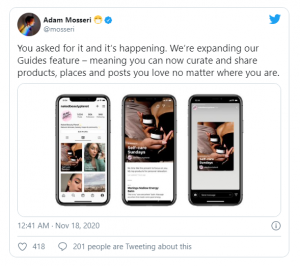by Shani Rosenfelder, October 28, 2015
 Getting “the right message, to the right user, at the right place, for the right price” is a line you hear all too often in data-driven marketing. This depiction, however, is often far from reality. Can it ever become true? I believe so.
Getting “the right message, to the right user, at the right place, for the right price” is a line you hear all too often in data-driven marketing. This depiction, however, is often far from reality. Can it ever become true? I believe so.
Before we discuss the future, let’s map out the current attribution space. There are ‘traditional’ solutions — let’s call them desktop or Web attribution solutions — that have been around for years. We also have mobile attribution solutions that surfaced only a few years ago, when mobile stormed forward.
This fragmentation is creating problems for marketers. Connecting the dots of an omnichannel reality – from Web, through mobile, to offline and TV — is a major headache. Feeling the pain, marketers are eagerly awaiting some sort of standardization. And with market demand comes change.
Let’s explore three possible scenarios going forward:
1. Desktop solutions take the mobile deep dive
Today, desktop attribution providers claim cross-channel coverage, but they don’t yet go full circle. Coming from the Web, the cookie-based mobile Web is familiar ground. They also partner with cross-device measurement companies that offer probabilistic identification when cookies are not available, particularly useful for iOS and the in-app environment.
Getting access to log-in data can also connect the dots, but data is often not available. Either way, a complete solution it is not.
Developing foolproof mobile attribution in-house requires a massive investment. For starters, integrations with thousands of mobile ad networks and media sources can take years. Also, mobile attribution tech is centered on selecting the best identifier in real time: a deterministic one (Apple’s IDFA, Google’s Advertising ID or Google Play Referrer), and / or a probabilistic one (fingerprinting solution). No easy task.
Other mobile attribution tech challenges include supporting scale when tracking billions of in-app events and connecting them to the attributed source, dealing with the variance in mobile and its multiple operating systems, developing a deep-linking solution to connect different mobile environments (a non-issue on the web), and adapting to the mobile funnel with its added app install stage.
Ultimately, mobile attribution is a world of its own. It is therefore unlikely that desktop firms can go it alone.
2. Mobile attribution solutions expand to desktop
Developing a cookie-based solution on top of an existing cookie-less one is a more realistic scenario. Although Web sites have their own tracking challenges, getting into a defined space like the Web is easier than getting into a still-changing space like mobile.
Although mobile attribution often includes insight into the consumer journey with pre-install contributors, last click attribution in mobile reigns supreme. Mobile attribution players would need to catch up with desktop by developing other advanced fractional attribution methods including time decay, even, linear and custom models.
We must also remember that a) marketing is becoming mobile-first, and b) mobile will serve as the main connector to the offline world with beacons, location-driven advertising and mobile payments rapidly evolving. It makes sense that mobile attribution takes the lead.
3. Consolidation
Always relevant in the ad tech space, consolidation can be led by the tech giants that are constantly thinking about offering it all — and making sure their competitors don’t. Or, by desktop attribution companies that need to get mobile right. A mobile provider may also seek a desktop solution to acquire its install base.
What true cross-channel attribution means for the future of customer engagement
Tying all channels together is the marketing holy grail of the coming years. The core of this connectivity, at least for marketers, is cross-device attribution and measurement.
With true cross-channel attribution, marketers would be able to focus on aligned cross-channel promotions, and optimize their ad spend (e.g. reducing waste by excluding a promotion to users who have already seen it on another channel).
A 360-degree attribution solution will also give marketers a deep understanding into the complex user journeys. For example, realizing that users who open an email on mobile are most likely to research in-app and complete the purchase offline.
On the customer side, users will finally feel like they are treated like one. Which is what they expect — wherever they are and whatever device they are using.
MediaPost.com: Search Marketing Daily
(131)
Report Post




